How Long Does It Take For a Car to Cool Down?
Scalding hot engine fluids and car parts pose a major safety risk for those performing mechanical work on recently-operated vehicles. Even washing the exterior or entering the cabin may require a certain amount of “cool down” time.
There’s science behind engine and vehicle heat retention that explains how long you really need to wait before tasks like oil changes, brake jobs, coolant checks, exhaust work, or exterior detailing after driving. Keep reading to learn all about optimal cool down times.

How Long It Takes For a Car to Cool Down:
Below is an account of various automotive conditions, and maintenance tasks of importance. Accompanying these individual sections, are general accounts of the time required for a vehicle to cool under various circumstances.
In any event, if doubt remains, it is always safest to check the temperature of various automotive materials and/or fluids with an infrared temperature gun before beginning work.
After Overheating
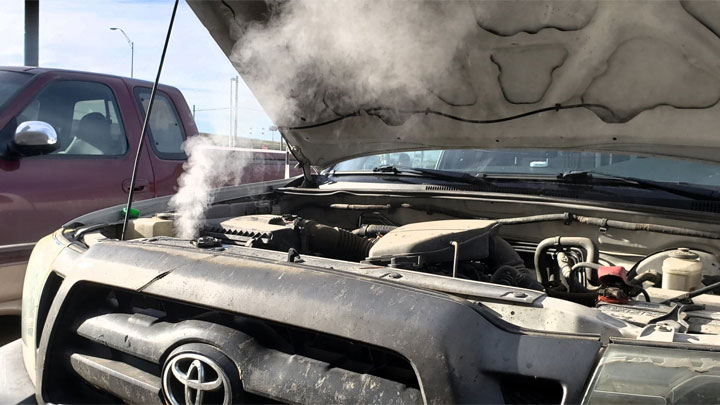
It is extremely important to allow a vehicle’s engine to cool before proceeding, in light of overheating.
Generally speaking, one should give their vehicle’s engine a minimum of 20-30 minutes to cool before resuming travel, after it has overheated. Failing to provide this period of cool down poses a significant risk of incurring engine damage.
Before Changing Oil

In most cases, a cooling period of 20-30 minutes will be adequate prior to changing a vehicle’s oil. Of course, the longer you wait, the cooler a vehicle’s crankcase oil will be. But wait too long and the old oil will become thicker and more of it may remain in the oil pan.
But waiting 20-30 min is a good rule of thumb before changing a vehicle’s oil to prevent you from being burnt by scalding lubricant oil.
Before Checking or Adding Coolant
One should always wait an adequate amount of time before attempting to vent pressure on their vehicle’s cooling system.
Allowing 30-60 minutes for cooling is recommended before cracking the cap on a vehicle’s radiator. Even then, extreme caution should be applied.
Before Checking or Adding Oil
It is always best to wait 10-15 minutes before checking engine oil.
This allows oil within the top end of an engine to drain to the sump below for more accurate measurement, while also letting the engine cool a bit, thereby lessening the chance of burning oneself.
Before Changing the Brake Fluid
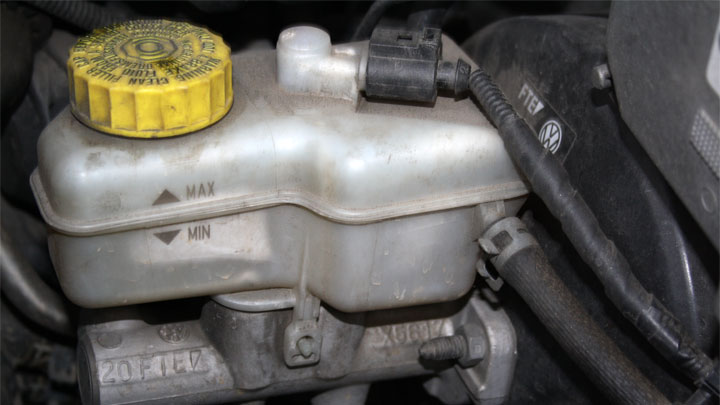
While brake fluid is less prone to rapid heating than most other types of automotive fluids, one should still allow adequate time for cooling before attempting to service the hydraulic portion of the brake system.
When possible, you should give your vehicle at least 10-15 minutes to cool before attempting to top off or change brake fluid.
Before Replacing Spark Plugs

Replacing spark plugs on a hot engine poses a significant risk of being burnt. This stems from the fact that one is forced to work for prolonged periods of time with their hands in close proximity to hot surfaces.
While it might actually be easier to remove spark plugs from a warm cylinder head, an engine should be allowed to cool for at least 1-hour before attempting any such work.
Before Replacing Brake Pads or Rotors
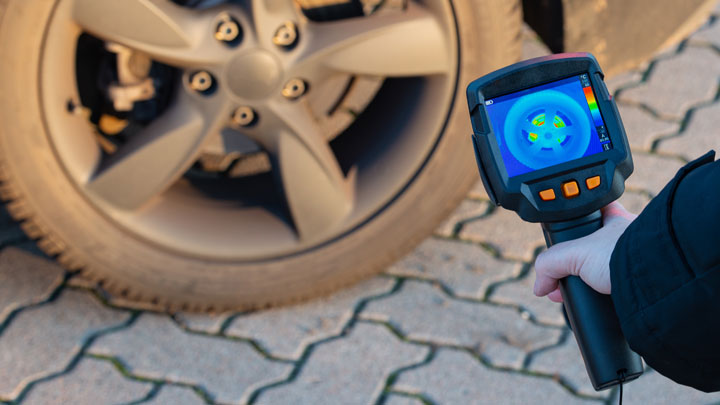
Because a vehicle’s foundation brake components operate in response to friction, many metallic components within this system can become extremely hot to the touch. For example, a vehicle’s brake pads and rotors can easily reach several hundred degrees while in operation.
Therefore, it is considered best practice to allow brake components to cool over the course of 30-60 minutes before attempting to work on them.
Before Working on Exhaust Components
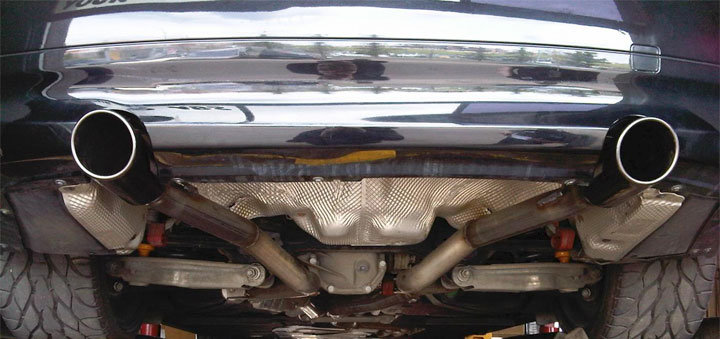
A vehicle’s exhaust system can easily heat to several hundred degrees under normal operating conditions. Therefore, one should wait no less than 60 minutes before attempting to service any exhaust-related component.
If possible, it can even be wise to allow a vehicle’s exhaust to cool overnight before attempting any major work.
Before Washing or Waxing the Exterior
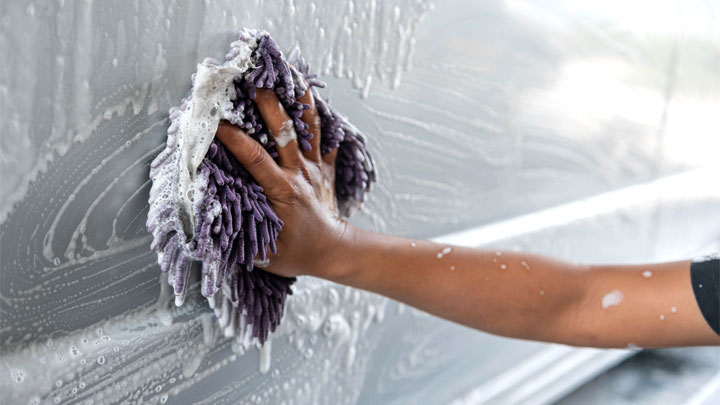
A vehicle is best detailed at ambient air temperatures, meaning that all has cooled completely following operation.
At a minimum, a vehicle should be allowed to cool (in the shade) for 45-60 minutes before detailing begins. When possible, one is best to wait until morning before washing and waxing their vehicle, thereby ensuring that all heat has dissipated.
Inside After Turning on A/C

There are many variables at play when determining how fast cooling will take place within a vehicle’s cabin, including ambient air temperature, cabin temperature, and humidity.
However, assuming that a vehicle’s A/C system is functioning at maximum capacity, one can expect cooling to take place in about 5 minutes. Older and economy cars may take a bit longer.
See Also: 8 Causes of A/C Not Blowing Cold Air
Tips for Faster Cool Down Time
The following are several key tips that can be helpful when attempting to cool your vehicle down at the quickest pace possible. Though time is the greatest denominator when determining how long a vehicle takes to cool, these tips can expedite the process.
Get Your Vehicle Out of the Sun
Letting a vehicle bake in the sun will do little to promote a prompt cool-down. Instead, park your vehicle in a garage or shaded area to speed matters up.
Pop The Hood
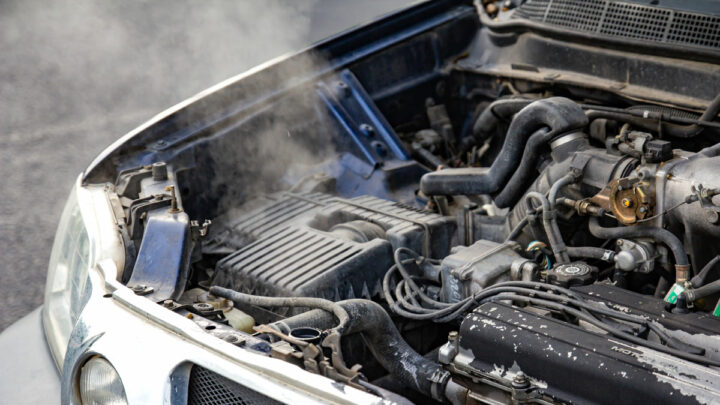
It can also be helpful to raise a vehicle’s hood during cool-down to allow air to circulate throughout the engine bay. Since heat rises, lifting a vehicle’s hood removes one major barrier to rapid cooling.
Got Box Fans?
If you have a couple of box fans at your disposal, they can be used to provide more rapid cooling of specific components. Propping fans of this type at an angle beneath a vehicle’s open hood can provide quicker engine cooling in most cases.
Run Your Heat
If your vehicle is experiencing overheating issues, and you need to reduce engine temperatures as quickly as possible, it can be wise to run your vehicle’s heat at full blast. Doing so allows heat to be removed from the engine’s coolant, as it passes through the cabin’s heater core.
Keep Fluids at Capacity
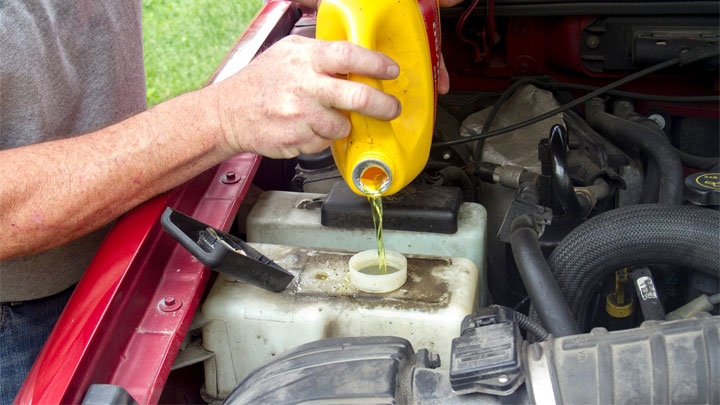
While this tip might not help at the moment, it is important to remember that a vehicle cools most adequately and generates the least amount of heat when filled to capacity with lubricant and coolant. Therefore, one should keep an eye on the level of such fluids.
Safety Measures When Dealing With a Hot Car
Here are several important safety tips to keep in mind when dealing with a hot engine, or vehicle as a whole. Remember, never attempt any form of maintenance on a hot vehicle, unless you are absolutely sure that you can do so safely.
- Always wear gloves when handling hot components.
- Wear long sleeve shirts to minimize burn potential.
- Open caps to pressurized vessels slowly, with a thick rag in hand.
- Lean away from pressurized vessels when removing any affixed caps.
- Never pour cold fluids directly into an overheated engine or radiator.
- Lightly feel of potentially hot surfaces before commencing work.
- If in doubt, always allow greater time for the cooling of components and fluids.
- P0480 Code (Symptoms, Causes, and How to Fix) - Apr 19, 2024
- Car Temperature Gauge Stopped Working? (Here’s Why) - Apr 15, 2024
- Ignition Coil vs Coil Pack (What’s the Difference?) - Apr 8, 2024
